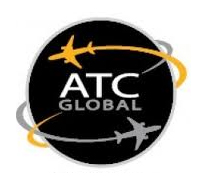ATC Global 2013 conference and seminars tackle the hard issues of ATM

Conference, seminar and workshop attendees at ATC Global 2013 heard a wide range of industry experts and decision-makers address some of the tough, usually unaddressed, issues confronting ATM managers today.
“If the ATM system – where personnel represent about 70% of costs - is to reduce unit charging rates by half, then it follows that some ATM jobs will have to go for the benefit of the greater good,” said UK parliamentarian Lord Soley of Hammersmith. “More work needs to be done on dealing with these people issues. Defining where the gains will be that can correspondingly mitigate any losses. Bargaining chips are needed for negotiation and these will be the foundations for compromise.”
The conference focused on areas of real progress which are being made on improving ATM performance, with many of the key initiatives being spearheaded by aircraft manufacturers and aircraft operators or via local consortia involving air navigation service providers (ANSPs) and airports. Paul Ravenhill, Technical Director at Helios, said improving the ATM performance on city-pair routes offers “early wins” in this regard. “For routes between complex airports you can assume a high level of equipage, implementing sequencing tools and controlled time of arrival - procedures that deliver efficiency and predictability on specific routes. This means best equipped aircraft gain access but aircraft not on the route are not penalised,” he said. In contrast more strategic programmes are making slow progress. Dr Dominic Walker of Northrop Grumman Park Air Systems cited the slow uptakes of potentially important new automated ATM systems and procedures at airports worldwide – such as foreign object damage identification systems (just seven) and airport collaborative decision making programmes in Europe (just six).
A special report on the dynamics of improving ATM performance in the short term and the role that aircraft operators are playing in pioneering new performance improvement initiatives will be published free of charge by ATC Global in the first half of April 2013, based on examples and discussions from the ATC Global 2013 conference.
At a well-attended workshop on “Integration of Remotely Piloted Air Systems (RPAS) into Civil Airspace” held in association with UVS International, delegates heard of the work underway to harmonise rules in Europe in this area in Europe. Filippo Tomasello of the European Aviation Safety Agency (EASA) said: “Some States do not have any rules at present. If we don’t find a way to harmonise the rules, we will not create an internal market and it will be fragmented.” The European Commission (EC) is now working on a draft regulatory roadmap to be complete by mid-2013 which will enable work to start on implementation in 2014. According to Peter van Blyenburgh of UVS International “This is when the real work will start…We need multiple stakeholders to put pressure on the EC.”
Other significant workshops were held to address topics such as “Challenges and benefits of automating the ATM system,” “Providing safe and immediate ATM services in the aftermath of natural disasters and during contingencies” and “Safety methodology for new interoperable and multi-segment ATM systems.” In the session on automation Alexis Brathwaite, CEO and President of the International Federation of Air Traffic Controllers Associations (IFATCA) spoke of the urgent need for next-generation system engineers to consult as early as possible with users of the systems under development to ensure their input into the future design of human machine interfaces.
Seminar sessions included subject areas such as “CPDLC data link overview”, Business intelligence; the ANSP's new key to efficiency”; “The power of rapid prototyping and collaborative testing in accelerating the uptake of standards in the ATM world”; “How NextGen Signal Processing addresses the changing radar environment”; “The evolution of aviation weather systems in the NextGen/SESAR future”; ”SESAR validation exercises at CDG airport”; “Integration of ground based surveillance data processing system and aircraft derived data”; and “LiDAR-aided air traffic management”.
Meanwhile the exhibition, featuring more than 150 exhibitors including Thales, NITA, WIDE, Northrop Grumman, Intelcan, Azimut, Vaisala, Moog Fernau, Barco, Guntermann & Drunck, Era A.S, Comsoft, Korea Airports Corp., Tern Systems, Nanjing LES Information Technology, VNIIRA and many others, all showcasing a number of important technology innovations and displays. Rohde & Schwarz presented a live demonstration of its ED137-compliant, R&S VCS-4G IP-based voice communications system which featured the company’s simultaneous transmission detection (STD) software. Adder showed its latest command and control switch featuring IP control and redundant power to offer users a continuous connection for working on up to four computers and up to 32 screens as though on a single interface. While Plantronics displayed a new cordless push-to-talk headset adapter designed to provide wireless ATC communications.
Presentations from sessions at ATC Global 2013 can be found for download at www.atcglobalhub.com. ATC Global 2014 will take place from 11-13 March at the Amsterdam RAI.




.png)
.jpg)



Comments
There are no comments yet for this item
Join the discussion